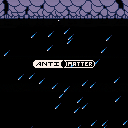Just starting out. So much to learn in PICO ! Just found out today that <> is not recognized, no, you must use ~= ... Screwy !
I'll be working on this cart quite a bit now and when done, hopefully it will be an effective notepad and maybe even give you some good ideas on coding and design. :)

I was reading that last night. That does make a bit more sense than ~=. Odd that I can't use <> . Even C++ uses <>, right ?

C++ uses !=
Pretty much only BASIC and Pascal use <>
I have no idea why Lua uses ~= but I'm guessing it stems from the fact that ~ in most languages is Bitwise NOT, so ... apply that logic looking for a symbol for not equals and come up with ~= , even though it's just a logical operator? I dunno.

It's strange that ~ is bitwise NOT in some languages when in written language it means "approximately", and in mathematics, it can have two different meanings - in set theory, it denotes equivalence relation, and in statistics it denotes distribution. In none of them does it ever mean "not".

In my game maker the tilde also represents near. This for instance:
~20 |
Means to return a random value from 15 to 25. A "near" value of 75% to 125% of the input.
~~20 |
Means to return a random value from 19 to 21. A "nearer" value of 95% to 105% of the input.
[Please log in to post a comment]









